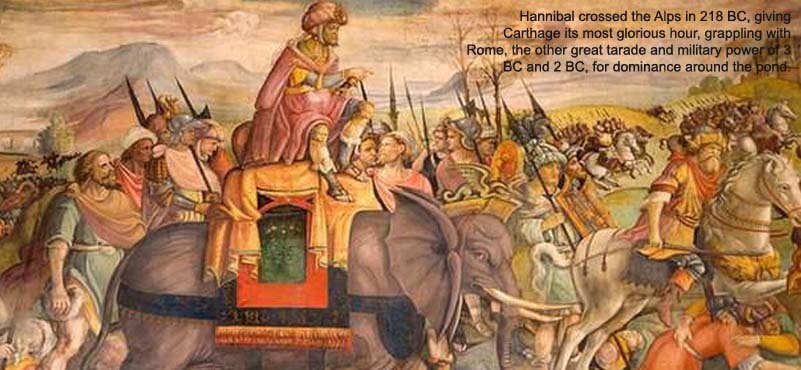Share the post "Combating Glacier Snout Recession: UNESCO sees Tourism as Support"
The story of glacier recession encompasses the dossier of routes and rivers cutting across. For instance, the southern Ladakhi gateway had been the Zoji La. Old timers will recall hot footing or brazenly pushing astride dusty ‘roads’ now extensively replaced by blacktop metalled stuff. In some ways this has removed the wondrous challenge of those routes… but can the contemporary visitor expect an unchanged scenario in a dynamic tech world? Besides, the fecund human imagination never tires of peering around yet more corners, laying bare virtually limitless grand visages. Where better than the Med!

A Delhi-based UN Tourism and
environment specialist
Recalling those mind-boggling logistics…
- The Carthage army, numbering 37 elephants, thousands of men, horses, and mules, crossed the Alps!
- The Stanford Alpine Archaeology Project began investigating Hannibal’s route… 1994
- The route remains cloaked in mystery…
Switch to the Himalaya
… behold the local right of way…
Early landmark… crossing the Kalindi Khal 1937 on the Alaknanda- Bhagirathi watershed… Doon masters Martyn and Gibson with Tenzing Norgay and Rinzing
Principal stakeholders in sustainability… local communities
Other local communities… on the fringe of survival
Keeping shared glacial melt concerns in view, UNESCO Regional Director for South Asia in New Delhi, Mr Tim Curtis, launched a stellar initiative partnering Indian Mountaineering Foundation (IMF) and UNEP:
Backed by several thematic presentations, the programme took note of the serious threats imparted by glacier recession and corrective steps required at the community, local, regional, national and international levels. Demonstrating a flexible, action-oriented approach, the discussion readily endorsed the need to expand the timeframe beyond one ‘International Year…’ to a decade for meaningful outcomes, the sectoral importance of MSME standpoints to ensure reliable data generation and evaluation of documents such as the Indus Waters Treaty.
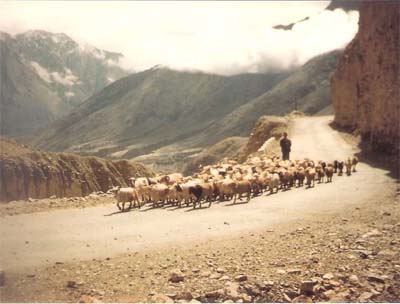 For further discussion two sustainable parameters emerged, namely, tourism and energy.
For further discussion two sustainable parameters emerged, namely, tourism and energy.
These are presented here to show content depth and variety required in the Master Plan (there being of course other important parameters such as host communities, animal and plant species, altitude, forest types, treeline, grassline, snowline, drainage basins, topsoil and geomorphology).
Implementation Modus – Energy
Step 1: Sustainable Development/Tourism Master Plan structure based on:
- G20 Roadmap
- Achieving SDGs

Step 2: Sustainable Development/Tourism Master Plan matrix encompassing:
- Demand side:
- India’s geo-strategic leadership as Chair-G20
- Development partnerships at local, regional, national, international and institutional levels.
- Supply side:
- Further pilot sites can be chosen from India’s Nubra/Shyok-Shaksgam watershed in Ladakh until the Yarlung Tsangpo’s ‘great bend’ at the twin
Namche Barwa-Gyala Peri peaks in Arunachal Pradesh, including where possible World Heritage Sites (WHS) and Ramsar Sites (RS), each endowed with Sustainable Development Master Plan potential.
- Each World Heritage Site signifies outstanding cultural/natural heritage; each Ramsar Site denotes an internationally significant wetland.
- Local employment potential, especially for women, youth & MSMEs, in every season all-year round.
- Collaborative sites’ pitch against climate change.
- Green Hydrogen… guiding light to de-carbonisation. The World Bank is financing its first green hydrogen project in Chile. The development objective of the Green Hydrogen Facility is to Support Green, Resilient, and Inclusive Economic Development in the Republic of Chile. The project comprises of two components:
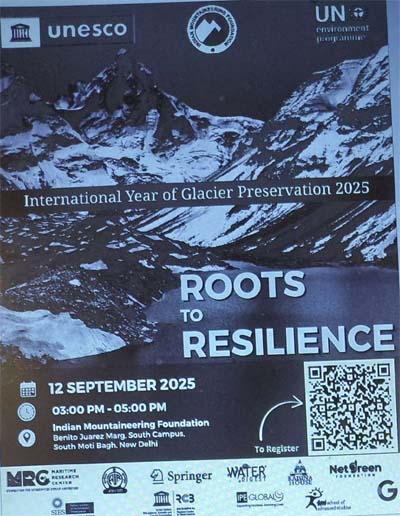 (1) The first component, green hydrogen investment sub-loans and risk-mitigation facility, will provide investment sub-loans on a preferential, but cost- covering basis to partially finance renewable green hydrogen production (including electrolysis systems, compression, and storage) sub-projects in Chile and risk-mitigation reserve accounts, consisting of following sub-components: green hydrogen investment sub-loans; and (ii) risk-mitigation reserve accounts.
(1) The first component, green hydrogen investment sub-loans and risk-mitigation facility, will provide investment sub-loans on a preferential, but cost- covering basis to partially finance renewable green hydrogen production (including electrolysis systems, compression, and storage) sub-projects in Chile and risk-mitigation reserve accounts, consisting of following sub-components: green hydrogen investment sub-loans; and (ii) risk-mitigation reserve accounts.
(2) The second component, capacity building and project management, will finance technical assistance, capacity-building activities, and overall project management activities to strengthen the enabling environment for green hydrogen through development of necessary professional, financial, and technical skills.
The capability approach unveiled by Amartya Sen lays bare that poverty reduction strategies are not a matter of service delivery alone… “The real need is to find ways to enhance the wherewithal of the poor, of women and men to transform their production capabilities and their lives. This requires action on a number of fronts: access to capacity building, training, finance including microfinance and markets, building of women’s self-help groups and local community organizations with effective community participation.”
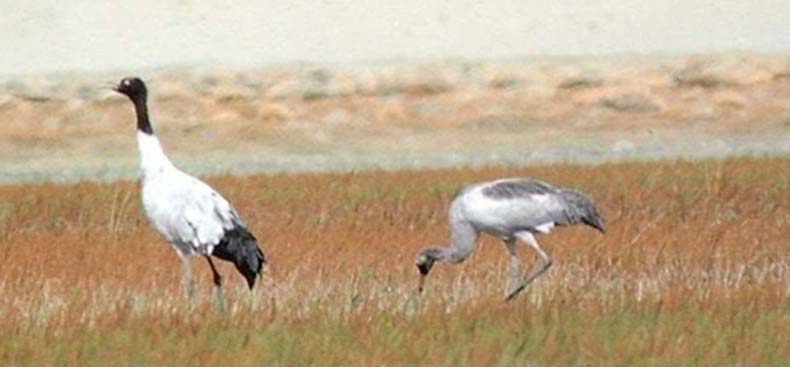
Coming to TOURISM, India’s apex policy statements regularly bracket Tourism among the five top national sustainable development thrust priorities. To illustrate the diverse potential of a Sustainable Development Master Plan, the Tourism sector’s resilience was again seen on World Tourism Day 27th September 2024, highlighting Tourism as a pillar of peace and understanding as UN Tourism gathered 500 sector leaders from 51 countries in Tbilisi, Georgia around a common vision and commitment to building a “peace- sensitive sector”.
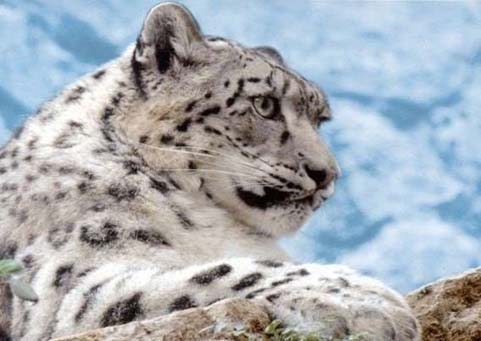 The tourism sector provides answers to several sustainable development issues. Rapid population increases in the developing world, including India, have pushed many rural communities towards livelihood diversification strategies for supplementing traditional farm-based income attempted, inter alia, by out- migration or also on H-K tourism circuits by providing visitor services.
The tourism sector provides answers to several sustainable development issues. Rapid population increases in the developing world, including India, have pushed many rural communities towards livelihood diversification strategies for supplementing traditional farm-based income attempted, inter alia, by out- migration or also on H-K tourism circuits by providing visitor services.
The latest UN Tourism data highlights the economic impact of post-COVID recovery:
International tourism receipts aggregated USD 1.4 trillion in 2023 or 93% of the USD 1.5 trillion earned by destinations in 2019.
Total export revenues from tourism (including passenger transport) touched USD 1.6 trillion in 2023, almost 95% of the USD 1.7 trillion recorded in 2019.
The economic contribution of tourism, measured as tourism direct gross domestic product (TDGDP) was USD 3.3 trillion in 2023, or 3% of global GDP, led by strong domestic and international tourism.
Safeguards with committed finance are necessary to combat:
- Habitat fragmentation.
- Apex and downstream species’ prey base and hunting radius constriction
- Gene pool, indigenous-exotic plant/animal species conflict.
Sustainable Development/Tourism Master Plan Tools and Outputs:
Per pilot, Census of India, NSS and other reliable data to compute sustainable yield targets based on:
- Hub and Spoke matrix of ten pilots structured as Hubs, each with Spokes and Seasonal factors impact
- Local community/differently-abled sensibilities
- Sustainable Hub & Spoke route plan to expand tourism shoulder period to/from main season, targeting year-on-year visitor calendar in:
- Macro period (annual/long-term); and
- Micro period (seasonal/short/medium term)
SUSTAINABLE DEVELOPMENT/TOURISM MASTER PLAN – STRUCTURE
- Pilot sites’ asset listing and baseline
- Optimize reputable partnerships
- Phased Master Plan (with 2 or 3 phases as deemed necessary) for:
- year-round sustainable domestic/international revenues & yields
- equitable local share, especially for women, youth and MSMEs
- support to local livelihoods for local supply chain work aspirants.
Broad way forward:
- Baseline diagnostic preparing forensic readiness for synergy between:
- Soft skills ‘Software’ Workplan components;
- Infrastructure ‘Hardware’ Workplan components;
- Local community and FAITH’s fulsome participation across both Workplans.
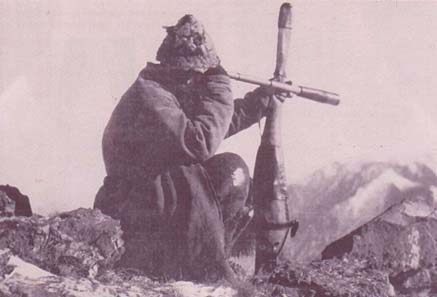 A bit of history
A bit of history
For pure mountain region exploration, the Shyok is unmatched… the iced-up dam formed by natural forces across the Shyok system was expected to collapse, water volume unleashed creating inestimable havoc. Nevertheless, the dam held at that frenzied time, producing F. Ludlow’s somewhat tongue-in-cheek Shyok visit report of August 1928. However, first, the location… “30 miles-due west of the Karakoram Pass, at an elevation of 20,000 feet, is the head basin of an enormous glacier, the Rimo, first accurately mapped by De Filippi in 1914”, consisting of “three main branches, the Northern, Central, and Southern Rimo. The Northern Rimo throws a tongue of ice over the Central Asian watershed, forming the source of the Yarkand river which flows northwards into Turkistan, and after traversing the Taklamakan desert, ultimately loses itself in the marshes of Lop Nor.

